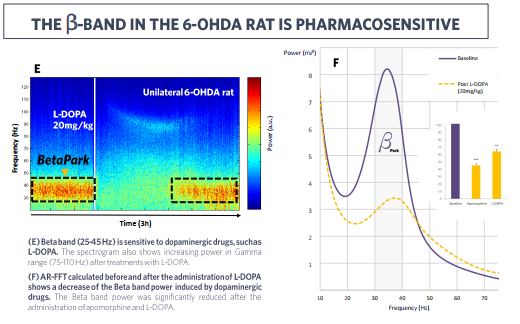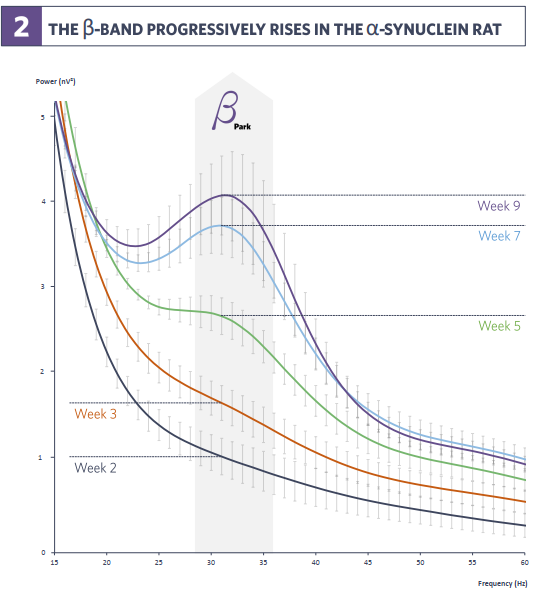PARKINSON'S DISEASE
prodromal phase
bridging the gap between prodromal and symptomatic phases of pd
Whereas the nature of the etiology of the process underlying clinical deterioration remains unknown, PD is characterized by the progressive loss of Substantia Nigra neurons with two main phases: a prodromal and a symptomatic phase.
Despite years of research, we still lack surrogate biomarkers of disease progression. Accumulative evidences have demonstrated the presence of aberrant oscillatory synchronization of neuronal activity across the cortico-basal ganglia-thalamo-cortical circuit in both PD patients and experimental animal models in the symptomatic phase.
Using state-of-the-art EEG methodologies, we investigated the development of β-band (~30Hz) in two rat models of PD as well as their response to the reference dopamine replacement therapy, L-DOPA, once degeneration is established.
PRECLINICAL RESEARCH
needs predictive translational objective functional biomarkers
BETApark as a biomarker of disease progression
The unilateral 6-OHDA rat model mimics PD late stage and the bilateral AAV-alpha-synuclein (α-Syn) rat model allows investigating the progression of the degeneration over several weeks.
In the late stages of the two models, a prominent β-band (~30Hz) was observed in the motor cortex (inexistent in control rats) that was reduced after L-DOPA challenge. This treatment also induced a prominent increase in the gamma (γ)-band (80-100Hz). In the AAV-α-Syn rat model, we observed the progressive rise in β-band power from the prodromal phase onwards.
Since the late stage data fit with the clinical literature, we propose that the β-band rise may represent a predictive, reliable, objective and clinically-relevant biomarker for the validation of disease modifying experimental therapeutics. In addition, our data call for a clinical validation of this biomarker.
Let's talk about your next project

Bâtiment SYNERGY
ZAC ISIPARC
38330 Saint Ismier – France
OPEN INNOVATION
CAPABILITIES
SYNAPCELL 2022 © – All Rights Reserved


